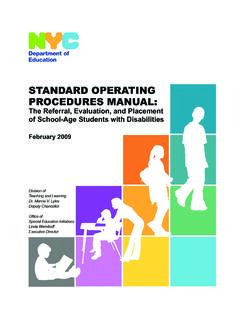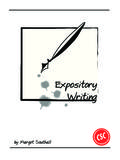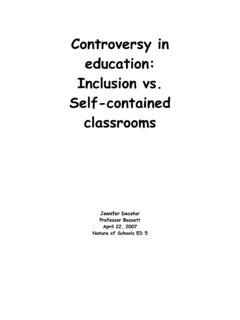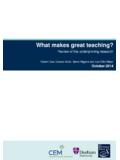Transcription of Danielson 2014-15 Rubric - Children First Network 107
1 Danielson 2014-15 Rubric Adapted to New York Department of Education Framework for Teaching Components Although the Rubric language in this copy remains the same at the NYC Official copy, it excludes the Introduction to how the Rubric has changed since its original publication. The margins and font sizes have been changed to save paper. Color/Shading was added to help the user navigate between the sections. At the end of the document, there are two strategically placed cheat sheets. One is for quickly identifying the components by Domains 1 & 4 and the other for Domains 2 & 3.
2 Danielson s key elements for the components are included. This is provides a more summative and accurate description of the components than others using performance indicators. Digital copies of this reformatted Rubric and the DOE released one are available on our website, Table of Contents Summary of Domains .. 3 Domain 1: Planning and Preparation .. 4 1a Knowledge of Content and Pedagogy .. 4 1e: Designing Coherent Instruction .. 6 Domain 2: The Classroom Environment .. 8 2a: Creating an Environment of Respect and Rapport .. 8 2d: Managing Student Behavior .. 10 Domain 3: Instruction.
3 12 3b: Using Questioning and Discussion Techniques .. 12 3c: Engaging Students in Learning .. 14 3d: Using Assessment in Instruction .. 16 Domain 4: Professional Responsibilities .. 18 4e: Growing and Developing Professionally .. 18 Cheat Sheet .. 20 Danielson 2014-15 Rubric Adapted to New York Department of Education Framework for Teaching Components Page 3 20130814 Summary of the Four Domains Focus Domain Description Domain Description Primarily Out of Classroom Evidence 1. Planning & Preparation Effective teachers plan and prepare for lessons using their extensive knowledge of the content area, the relationships among different strands within the content and between the subject and other disciplines, and their students prior understanding of the subject.
4 Instructional outcomes are clear, represent important learning in the subject, and are aligned to the curriculum. The instructional design includes learning activities that are well sequenced and require all students to think, problem solve, inquire, and defend conjectures and opinions. Effective teachers design formative assessments to monitor learning, and they provide the information needed to differentiate instruction. Measures of student learning align with the curriculum, enabling students to demonstrate their understanding in more than one way. 4. Professional Responsibilities Accomplished teachers have high ethical standards and a deep sense of professionalism, focused on improving their own teaching and supporting the ongoing learning of colleagues.
5 Their record-keeping systems are efficient and effective, and they communicate with families clearly, frequently, and with cultural sensitivity. Accomplished teachers assume leadership roles in both school and LEA projects, and they engage in a wide range of professional development activities to strengthen their practice. Reflection on their own teaching results in ideas for improvement that are shared across professional learning communities and contribute to improving the practice of all. Primarily In-Classroom Evidence 2. Classroom Environment Effective teachers organize their classrooms so that all students can learn.
6 They maximize instructional time and foster respectful interactions with and among students, ensuring that students find the classroom a safe place to take intellectual risks. Students themselves make a substantive contribution to the effective functioning of the class by assisting with classroom procedures, ensuring effective use of physical space, and supporting the learning of classmates. Students and teachers work in ways that demonstrate their belief that hard work will result in higher levels of learning. Student behavior is consistently appropriate, and the teacher s handling of infractions is subtle, preventive, and respectful of students dignity.
7 3. Instruction In the classrooms of accomplished teachers, all students are highly engaged in learning. They make significant contributions to the success of the class through participation in high-level discussions and active involvement in their learning and the learning of others. Teacher explanations are clear and invite student intellectual engagement. The teacher s feedback is specific to learning goals and rubrics and offers concrete suggestions for improvement. As a result, students understand their progress in learning the content and can explain the learning goals and what they need to do in order to improve.
8 Effective teachers recognize their responsibility for student learning and make adjustments, as needed, to ensure student success. Danielson 2013 Rubric Adapted to New York Department of Education Framework for Teaching Components Page 4 20130814 Domain 1: Planning and Preparation Component 1a: Demonstrating Knowledge of Content and Pedagogy In order to guide student learning, teachers must have command of the subjects they teach. They must know which concepts and skills are central to a discipline and which are peripheral; they must know how the discipline has evolved into the 21st century, incorporating issues such as global awareness and cultural diversity.
9 Accomplished teachers understand the internal relationships within the disciplines they teach, knowing which concepts and skills are prerequisite to the understanding of others. They are also aware of typical student misconceptions in the discipline and work to dispel them. But knowledge of the content is not sufficient; in advancing student understanding, teachers must be familiar with the particularly pedagogical approaches best suited to each discipline. The elements of component 1a are: Knowledge of content and the structure of the discipline Every discipline has a dominant structure, with smaller components or strands, as well as central concepts and skills.
10 Knowledge of prerequisite relationships Some disciplines for example, mathematics have important prerequisites; experienced teachers know what these are and how to use them in designing lessons and units. Knowledge of content-related pedagogy Different disciplines have signature pedagogies that have evolved over time and been found to be most effective in teaching. Indicators include: Lesson and unit plans that reflect important concepts in the discipline Lesson and unit plans that accommodate prerequisite relationships among concepts and skills Clear and accurate classroom explanations Accurate answers to students questions Feedback to students that furthers learning Interdisciplinary connections in plans and practice Danielson 2013 Rubric Adapted to New York Department of Education Framework for Teaching Components Page 5 20130814 ineffective Developing Effective Highly Effective 1a.







